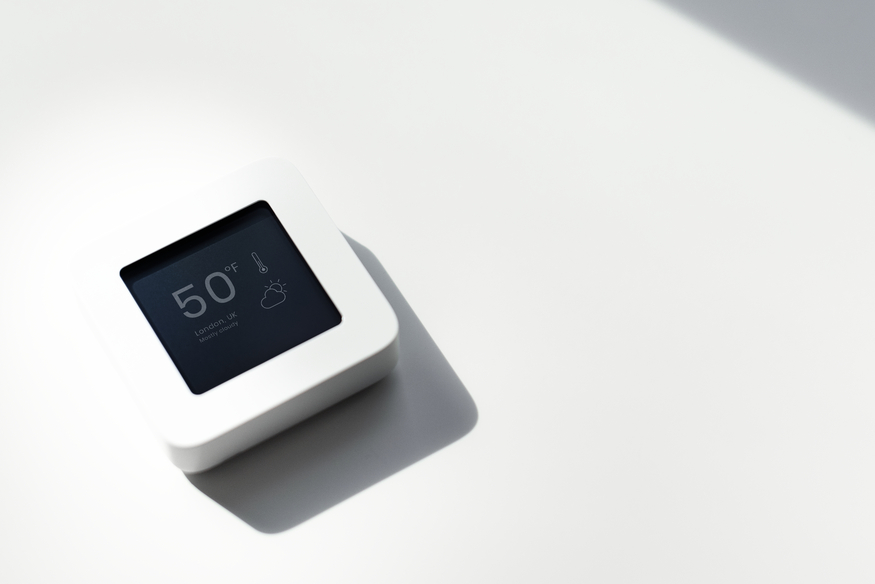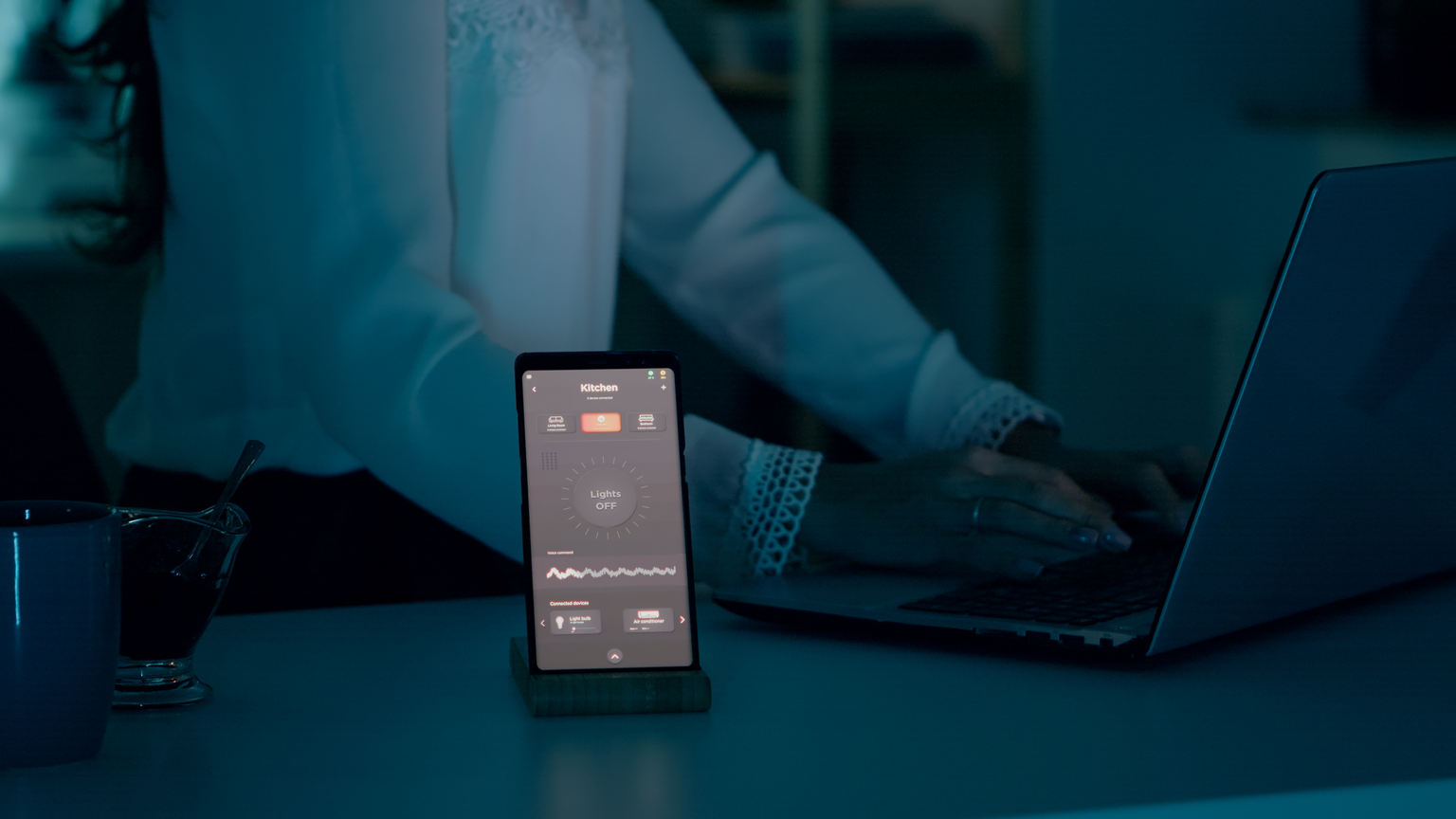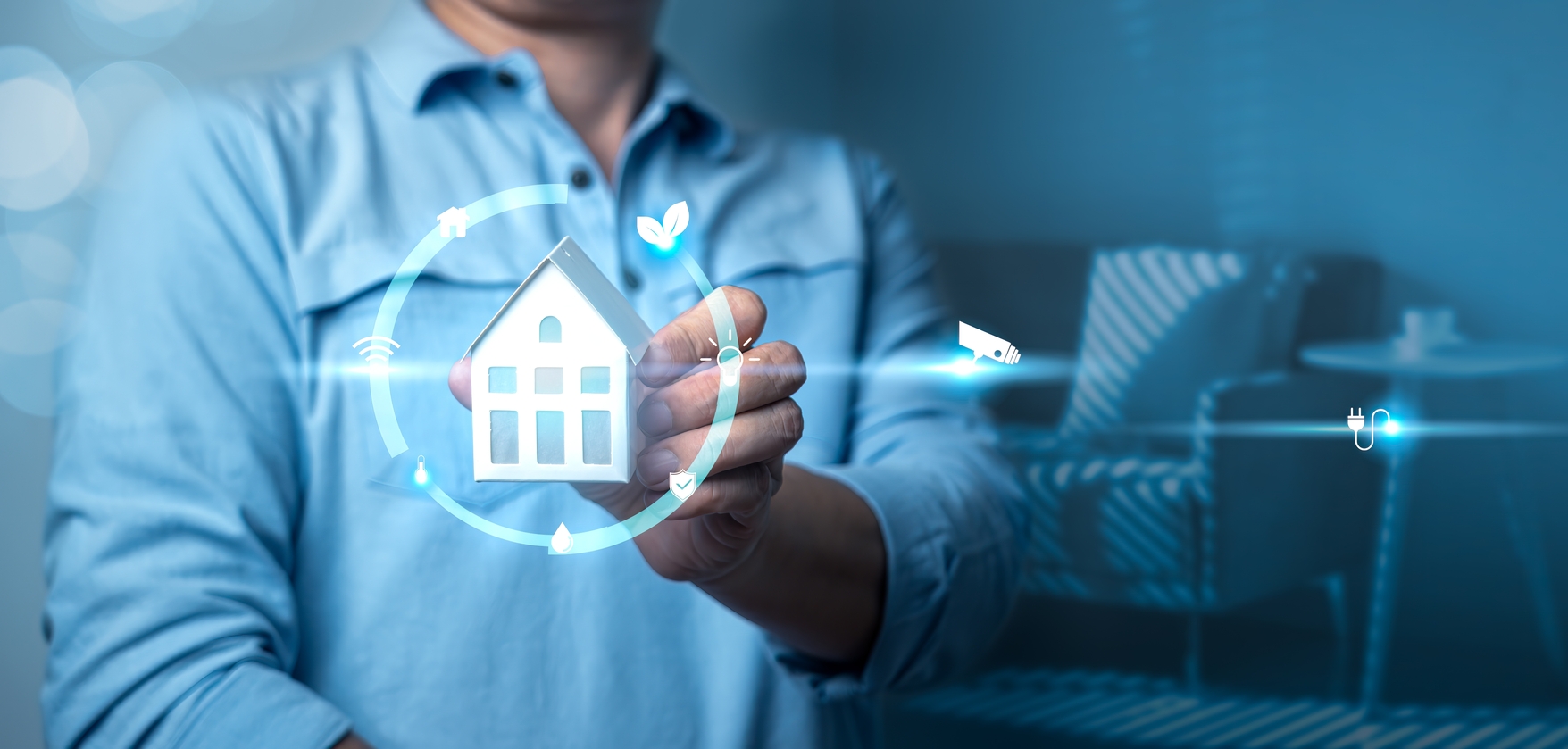Smart home automation refers to the integration of various devices and systems within a home to create a centralized and intelligent control system. The power of smart home automation lies in its ability to enhance convenience, efficiency, comfort, remote access, adaptability, and security in our daily lives.
Convenience

Smart home automation simplifies the management of various devices and systems by consolidating control into one interface. Gone are the days of manually adjusting each device or system separately. With a smart home setup, you can use your smartphone, tablet, or voice commands to control lights, thermostats, appliances, and more. For instance, imagine being able to turn off all the lights in your home, adjust the thermostat, and lock the doors simultaneously with just a voice command or a few taps on your smartphone. This level of convenience eliminates the hassle of individually managing each device, freeing up time for other activities.
Sample Scenario
You arrive home after a long day at work. Instead of fumbling for keys in the dark, you simply speak a command to unlock your smart door lock. As you enter, the lights automatically turn on to your preferred level of brightness. Meanwhile, the thermostat adjusts the temperature to your desired comfort, creating a welcoming environment without any manual intervention.
Smart home automation plays a vital role in promoting energy efficiency and reducing utility bills. For example, smart thermostats can learn your schedule and preferences, automatically adjusting the temperature based on your habits. This ensures optimal energy usage, preventing unnecessary heating or cooling when no one is home. Similarly, smart lighting systems can detect occupancy and adjust lighting accordingly, reducing energy wastage. By integrating these energy-saving features, smart home automation allows homeowners to make significant strides in conserving energy and reducing their carbon footprint, resulting in cost savings over time.
Sample Scenario
You’re away from home, and you realize you forgot to turn off the lights. With a few taps on your smartphone, you remotely access your smart lighting system and switch off all the lights instantly. Not only does this save energy, but it also provides peace of mind knowing you can control and monitor your home even when you’re away.
Security is a top priority for homeowners, and smart home automation offers a comprehensive solution. Smart locks, security cameras, motion sensors, and alarm systems can be seamlessly integrated into a smart home setup, providing robust security measures. Homeowners can monitor their properties remotely through their smartphones, receive real-time alerts, and even grant access to guests or service providers from anywhere. These features offer an unprecedented level of control and peace of mind, ensuring that your home is protected even when you’re not physically present.
Sample Scenario
You’re on vacation, and you receive a notification on your smartphone that motion has been detected outside your front door. With a few taps, you access the security camera feed and assess the situation. If it’s a false alarm, you can dismiss it, but if there’s a genuine concern, you can immediately contact the authorities, safeguarding your home and loved ones.
Energy Efficiency

Smart home automation offers significant benefits when it comes to energy efficiency and reducing utility bills. By intelligently managing devices like thermostats and lighting systems, homeowners can optimize energy usage and minimize wastage. Here’s an elaboration on how smart home automation achieves energy efficiency:
Smart thermostats are an excellent example of how automation can reduce energy consumption. These devices learn your preferences and daily routines, automatically adjusting the temperature based on your schedule. For instance, if you typically leave for work at 8 a.m., the smart thermostat can raise the temperature a bit before you wake up and lower it when you leave. This proactive adjustment ensures that you’re not wasting energy on heating or cooling an empty home.
Additionally, smart thermostats can adapt to changing weather conditions and adjust accordingly. If the day is particularly warm, the thermostat can raise the temperature slightly to reduce energy usage. Some models can even connect to weather forecasts, allowing them to optimize temperature settings based on anticipated weather patterns.
Smart lighting systems also contribute to energy efficiency. They can automatically turn off lights in unoccupied rooms by detecting motion or absence. This prevents lights from being left on unintentionally, reducing unnecessary energy consumption. Moreover, smart lighting can adjust brightness levels based on natural light. For example, if the system detects ample sunlight entering a room, it can dim or turn off artificial lights to take advantage of natural lighting, thereby saving electricity.
Sample Scenario
You’re leaving your home for the day. As you walk out the door, the smart home system detects your absence and sends a signal to the smart thermostat and lighting system. The thermostat adjusts the temperature to an energy-saving level while ensuring it’s comfortable when you return. Meanwhile, the lights automatically turn off in all rooms, eliminating any chances of lights being left on throughout the day.
Security

Smart locks are a cornerstone of smart home security systems. They provide convenient and secure access control to your home. With smart locks, homeowners can lock and unlock doors remotely using their smartphones or other connected devices. This eliminates the need for physical keys and enables convenient access management.
Sample Scenario
You’re expecting a package delivery while you’re away. With a smart lock, you can grant temporary access to the delivery person, allowing them to unlock the door, drop off the package, and lock the door again—all monitored through security cameras.
Smart security cameras offer homeowners the ability to monitor their property remotely in real-time. These cameras can be accessed through smartphones or tablets, allowing homeowners to check on their homes from anywhere. Some cameras also provide features such as motion detection and live video streaming, enabling proactive monitoring.
Sample Scenario
You’re on vacation, and you receive a motion detection alert on your smartphone. You access your security camera feed and see a person on your property. With the ability to communicate through the camera’s two-way audio, you can issue a warning or notify authorities to address the situation.
Motion sensors are integral components of smart home security systems. These sensors detect movement within their range and trigger actions, such as sending alerts or activating alarms. By strategically placing motion sensors in key areas, homeowners can create a comprehensive security net to detect potential intrusions.
Sample Scenario
You’re asleep, and motion sensors detect movement near your home’s entrance. The smart home automation system immediately triggers an alert and activates security lights, scaring away potential intruders while alerting you to the situation.
Smart home automation offers the advantage of integrating various security devices and systems. This integration ensures a comprehensive and responsive approach to home security. For example, when a security camera detects motion, it can automatically trigger other devices, such as turning on lights, sounding alarms, or locking doors, creating a deterrent effect against potential intruders.
Sample Scenario
A security camera detects motion near your backyard. The smart home system activates outdoor floodlights and starts recording video footage. Simultaneously, an alert is sent to your smartphone, allowing you to assess the situation and take appropriate action.
Smart home automation enables homeowners to remotely monitor their property and receive real-time alerts. Whether you’re at work, traveling, or simply away from home, you can access your security system through a smartphone or tablet. Real-time alerts notify you of events, such as unauthorized access attempts, motion detection, or even smoke or carbon monoxide alarms, ensuring that you’re always informed about the security status of your home.
Sample Scenario
You’re at work, and a motion sensor in your living room detects movement. An instant alert is sent to your smartphone, allowing you to view the live camera feed and determine if it’s a genuine threat or a false alarm. You can then contact the authorities if necessary.
Comfort and Ambiance

Smart home automation offers an unparalleled level of customization, allowing homeowners to create personalized environments that cater to their preferences and enhance their comfort. Through the integration of various devices and systems, homeowners gain complete control over their lighting, shades or blinds, audio and video systems, and more. Here’s an elaboration on how smart home automation enables personalized environments:
Smart lighting systems allow homeowners to create customized lighting scenes to set the desired ambiance for different activities or moods. With a single command or a tap on a smartphone, you can adjust the brightness, color, and even the color temperature of your lights. For instance, you can create a cozy and warm scene for relaxing in the evening, or a bright and energizing scene for productive work sessions.
Sample Scenario
With a voice command, you can activate a “Movie Night” lighting scene that dims the lights to an optimal level, creating a cinema-like experience in your living room.
Smart home automation extends to window treatments, allowing homeowners to adjust shades or blinds with ease. With a simple command or through a smartphone app, you can control the position of your shades or blinds to manage natural light and privacy. This feature is particularly useful for rooms with large windows or during different times of the day when sunlight may be too harsh or when you desire complete darkness for better sleep.
Sample Scenario
As the morning sun streams into your bedroom, you can use your smartphone to raise the shades and allow natural light to gently wake you up, creating a peaceful and refreshing start to your day.
Smart home automation enables seamless control over audio and video systems throughout your home. Whether it’s streaming music, watching movies, or enjoying your favorite TV shows, you can easily manage your entertainment setup with a single command. You can control the volume, switch between different audio sources, and even synchronize audio across multiple rooms for a consistent listening experience.
Sample Scenario
With a voice command or a few taps on your smartphone, you can initiate a “Dinner Party” audio scene that plays soft background music in the dining area, creating a pleasant atmosphere for your guests.
Smart home automation takes home entertainment to the next level by allowing homeowners to set up a dedicated home theater experience. You can integrate your audiovisual systems, lighting, and shade control to create an immersive and cinematic environment. With a single command or a touch on a control panel, you can dim the lights, lower the shades, power on the projector and audio system, and even adjust the seating for an optimal viewing experience.
Sample Scenario
Using a smart home automation app, you can initiate a “Movie Time” command that automatically lowers the shades, dims the lights, activates the surround sound system, and adjusts the reclining seats in your home theater room, transforming it into a captivating cinematic space.
Remote Access and Monitoring

Smart home automation offers the invaluable capability of remote monitoring and control, allowing homeowners to stay connected to their homes no matter where they are. Through the use of smartphones, tablets, or other internet-connected devices, individuals can access their home’s systems, check security cameras, adjust temperature settings, receive notifications, and more. Here’s an elaboration on the benefits and functionality of remote access in smart home automation:
Remote access provides homeowners with peace of mind by enabling them to monitor their homes even when they are away. Whether you’re at work or on vacation, you can check in on your home’s security cameras, ensuring that everything is as it should be. In the event of suspicious activity, you can take immediate action by contacting authorities or notifying neighbors. This level of vigilance enhances home security and helps deter potential intruders.
Sample Scenario
While on vacation, you receive a security camera notification indicating motion detection at your front door. You access the live camera feed on your smartphone and see a delivery person leaving a package. Satisfied, you remotely lock the front door and continue to enjoy your vacation, knowing that your home is secure.
Remote access in smart home automation allows homeowners to control various aspects of their homes from anywhere. You can adjust temperature settings, turn lights on or off, activate or deactivate security systems, and control appliances with a few taps on your smartphone. This level of convenience ensures that you can create the desired environment before arriving home or making necessary adjustments remotely.
Sample Scenario
You’re returning home after a long day, and it’s hot outside. Using your smartphone, you adjust the thermostat to cool your home, ensuring a comfortable environment upon your arrival. Additionally, you turn on the lights in the living room and start the coffee machine, so everything is ready for you when you walk in the door.
Smart home automation systems with remote access can send real-time notifications and alerts directly to your smartphone. Whether it’s a security breach, a smoke alarm, a water leak, or even a reminder to change air filters, these notifications keep you informed about important events in your home. This immediate awareness allows you to address issues promptly, mitigating potential damage and ensuring the smooth operation of your home’s systems.
Sample Scenario
You receive a notification on your smartphone indicating that a water leak has been detected in your basement. With remote access, you can view the live camera feed, assess the situation, and take immediate action by shutting off the water supply or contacting a plumber, minimizing the potential for extensive damage.
Remote access in smart home automation enables homeowners to create a vacation or away mode. By setting up predetermined schedules or randomizing activities such as lighting and blinds control, you can create the illusion of an occupied home, deterring potential burglars. This feature provides an additional layer of security and peace of mind, especially when you’re away for an extended period.
Sample Scenario
Before leaving for vacation, you activate the “Away Mode” on your smart home system. Lights turn on and off at different times, curtains open and close, and even the TV or music system simulates activity, making it appear as though someone is home, enhancing security while you’re away.
Integration and Compatibility

Smart home automation is built upon the principle of seamless integration and compatibility among devices and systems. The design of smart home devices allows them to work together harmoniously, facilitating interconnectedness and collaboration. This interoperability is made possible through various communication protocols such as Wi-Fi, Bluetooth, Zigbee, and more.
By utilizing these protocols, smart home devices from different manufacturers can communicate and share information, enabling homeowners to create a cohesive and unified smart home ecosystem. This means that a smart thermostat from one brand can interact with smart lighting from another brand, and both can integrate with a voice assistant or a central control hub.
The flexibility and scalability offered by this interoperability are significant advantages of smart home automation. Homeowners have the freedom to choose the devices and systems that best suit their needs, regardless of the brand or manufacturer. They can start with a few devices and gradually expand their smart home setup over time, integrating new devices seamlessly. This flexibility allows homeowners to customize and tailor their smart homes according to their preferences and budget.
Additionally, interoperability ensures that homeowners are not locked into a single ecosystem or proprietary technology. They have the freedom to mix and match devices and systems from different manufacturers, selecting the ones that offer the best features, performance, and value. This competitive landscape promotes innovation and drives manufacturers to create products that are compatible with existing smart home ecosystems.
The interoperability of smart home devices also facilitates ease of use. With a centralized control interface, homeowners can manage and control multiple devices through a single app or voice commands. They don’t need to switch between different apps or platforms to operate various devices, making the smart home experience more convenient and user-friendly.
Adaptability and Learning

One of the remarkable features of smart home automation is its ability to learn and adapt to the habits and preferences of homeowners. Through continuous interaction and data analysis, smart home systems can become more intuitive and provide a personalized experience. This adaptive nature of smart home automation enhances convenience, comfort, and efficiency. Let’s delve deeper into this aspect:
Smart lighting systems are a prime example of how smart home automation can learn from your habits. As you interact with the system, such as turning lights on and off or adjusting brightness levels, the system collects data and analyzes your usage patterns. Over time, it recognizes your preferences and can automatically adjust the lighting accordingly. For example, if you tend to dim the lights in the evening, the system will anticipate this and adjust the lighting levels based on your habits.
Moreover, smart home systems can integrate multiple data sources to further refine their adaptive capabilities. They can gather information from motion sensors, occupancy sensors, and even weather forecasts to create a more comprehensive understanding of your lifestyle. This data-driven approach allows the system to anticipate your needs and adjust various aspects of your home environment accordingly.
For instance, a smart thermostat can learn your schedule and temperature preferences, ensuring a comfortable environment when you’re at home and saving energy when you’re away. It can adapt to changes in your routine and adjust the temperature accordingly, providing optimal comfort without manual intervention.
Another example is a smart home entertainment system that learns your viewing and listening habits. It can suggest personalized content based on your preferences and even automate actions like turning on your favorite music playlist when you enter a specific room.
The adaptive nature of smart home automation not only enhances convenience but also contributes to energy efficiency. Learning your habits and adjusting various systems accordingly, optimizes energy usage and reduces wastage.
Once your smart home automation system is set up and customized to your preferences, immerse yourself in the benefits it offers. Experience the convenience of controlling your home with a simple voice command or through an intuitive smartphone app. Revel in the enhanced comfort, energy efficiency, and peace of mind that smart home automation brings to your daily life. Embrace the power of technology to simplify tasks, create personalized environments, and enjoy a more connected and intelligent home. Experience the future today with smart home automation!
